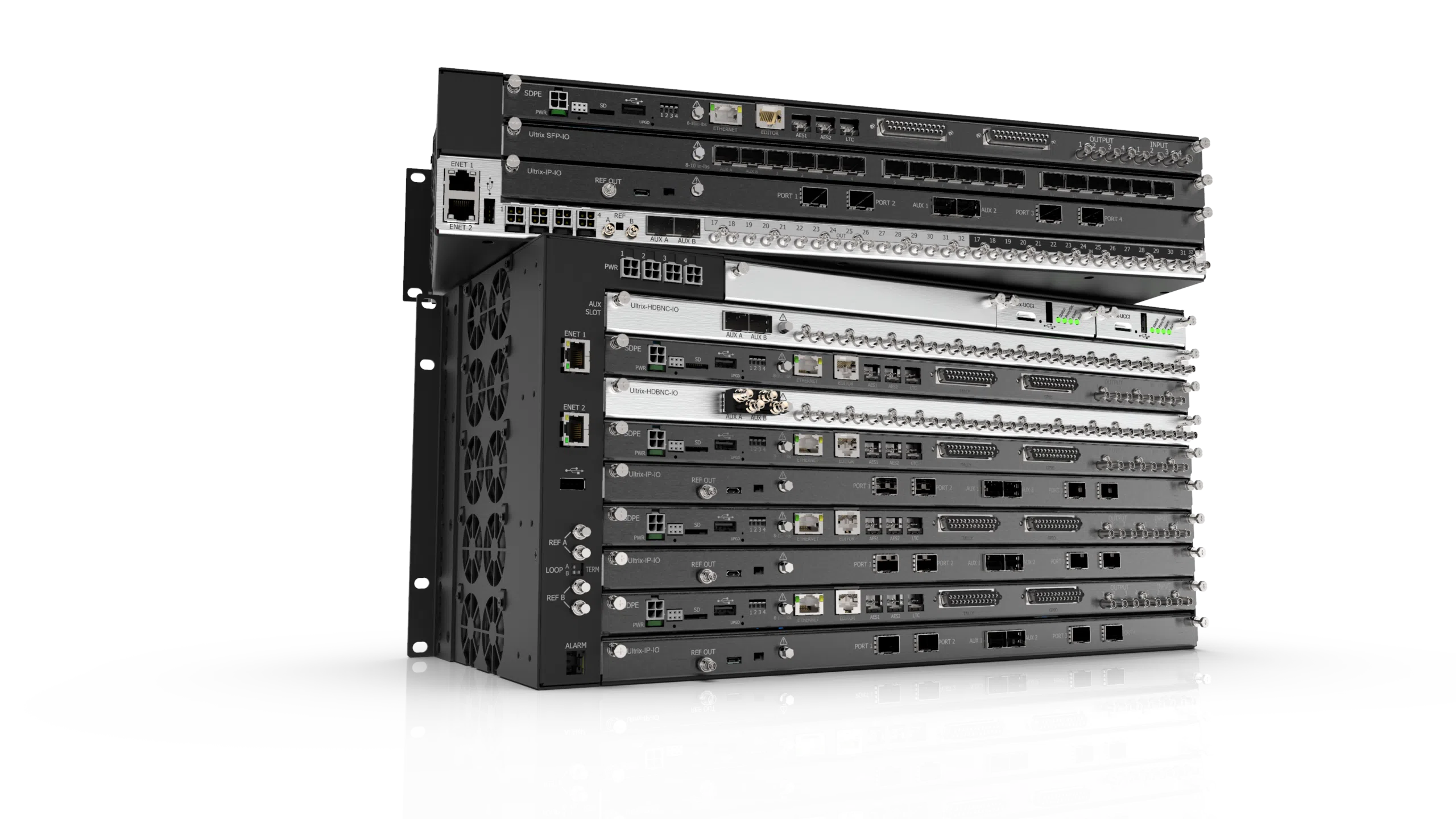May 26, 2021 - Ross Video Team, Ross News
The Evolution of the Software-Defined Production Engine – Introducing Ultrix Carbonite


Ampex. GVG-300. Film Chain. If those words and phrases sound as foreign to you as SCRUM does to me (and for all you rugby fans, it’s not what you think) skip down to the next paragraph. But even if you do still remember the days of standalone DVEs, you probably never thought much about the core functionality of all those ancient machines. Back then, we mostly worked on “purpose-built” devices; in other words, hardware that was specifically designed for one thing only. The production switcher cut the shows, the router shipped signals around the facility and the CG did… well, the CG thing. I know that I never really thought about whether my production switcher could become a multi-channel image processor or high-end chroma keyer, and I’m betting that most of my peers didn’t either. And despite the unrelenting march of progress, to a greater or lesser degree, that’s still mostly the case in our modern, multi-tasking, digitally-assisted world. But even a recovering geek like myself can see that like the song says, The Times They Are A-Changin’. (If you’ve never heard of that tune, ask Siri to play it for you.)
In my last post, I wrote about SDPE, the Software-Defined Production Engine that is at the heart of our Ultrix Acuity hyper-converged production platform. In that article, I also mentioned that this innovative hardware board could be repurposed to add features and create exciting new products. Well, guess what? We’ve already got something new for you: Ultrix Carbonite, the next-generation production powerhouse based on the SDPE hardware blade. With enhanced new features, the ability to accommodate differing connection schemes and signal formats, and legendary Carbonite ease of use, the world’s most popular mid-size production platform just got better. Let’s take a deeper dive into Ultrix Carbonite.
First off, let’s be perfectly clear: the SDPE blade in Ultrix Carbonite is identical to the one used in Ultrix Acuity – no differences whatsoever. To be sure, Ultrix Acuity requires a CPU card that isn’t needed in Ultrix Carbonite, but the SDPE blade itself is exactly the same. And down the road, that’s going to open up some very interesting and exciting opportunities; but more about that later. For now, let’s run through some of the major features of this new platform.
For starters, Ultrix Carbonite SDPE blades can be mounted in either the FR2 (2RU) or FR5 (5RU) Ultrix frames. So for those of you with space-constrained tech cores or already-stuffed mobile units, the FR2 can be a godsend. Now obviously the larger frame can provide a bigger I/O matrix, but no matter which frame is chosen, the Carbonite blade has access to all Ultrix inputs, in groups of 18, for assignment as production switcher sources. Additionally, the blade itself has four dedicated inputs and four dedicated outputs. That means a single blade provides a 22 x 22 I/O matrix in either HD or UHD.
.jpg) Each Ultrix Carbonite blade can provide up to two HD or UHD Mix/Effects banks along with four MiniME banks. (In UHD mode, two MiniME banks are available.) And for all you eagle-eyes out there who spotted the six keyer buttons on our gorgeous TouchDrive panels, you win! Ultrix Carbonite supports six full-function keyers and one transition keyer on each M/E. And don’t forget that each MiniME has two independent keyers as well, so a two M/E Ultrix Carbonite in HD provides twenty-two keyers! Add floating 2D DVEs, UltraChrome chroma-key engines, MediaStores, MultiViewers, and DashBoard integration and you’ve got one very powerful little beast.
Each Ultrix Carbonite blade can provide up to two HD or UHD Mix/Effects banks along with four MiniME banks. (In UHD mode, two MiniME banks are available.) And for all you eagle-eyes out there who spotted the six keyer buttons on our gorgeous TouchDrive panels, you win! Ultrix Carbonite supports six full-function keyers and one transition keyer on each M/E. And don’t forget that each MiniME has two independent keyers as well, so a two M/E Ultrix Carbonite in HD provides twenty-two keyers! Add floating 2D DVEs, UltraChrome chroma-key engines, MediaStores, MultiViewers, and DashBoard integration and you’ve got one very powerful little beast.
Now for some of the really cool stuff. Although it may be less practical in the FR2, multiple Carbonite SDPE blades can be installed in either frame – up to two in the FR2 and four in the FR5. If you happen to have both an Acuity control panel and TouchDriveTM control panel, you can even install Acuity and Carbonite SDPE blades in the same FR5 chassis as well. What’s more, each Carbonite and Acuity instance can operate in a different format! Imagine: one control room running a show in HD while another is doing a UHD program using the same chassis! Talk about space-saving! And power-saving, HVAC-saving, engineering-saving…and oh yeah, money-saving!
Want more? Well, remember how earlier I mentioned that the SDPE blade that powers Ultrix Carbonite is the exact same hardware as that of Ultrix Acuity? (Starting to see the light bulbs go on…) That’s right: with a simple firmware upgrade, you’ll be able to repurpose the blade itself to be either an Acuity, a Carbonite, or whatever other new gadgets we come up with! Think about that – a single, multi-purpose hardware card that can be reprogrammed as needed. At that point, even your shelf-spare inventory will be smaller and less expensive. That’s real-world innovation.
For more information on Ultrix Carbonite, click here to visit our product page.
To watch the Ross Live 2021 Ultrix Carbonite Tech Talk presentation, click here.
We’ll put you in touch with a member of our team to discuss your specific needs.